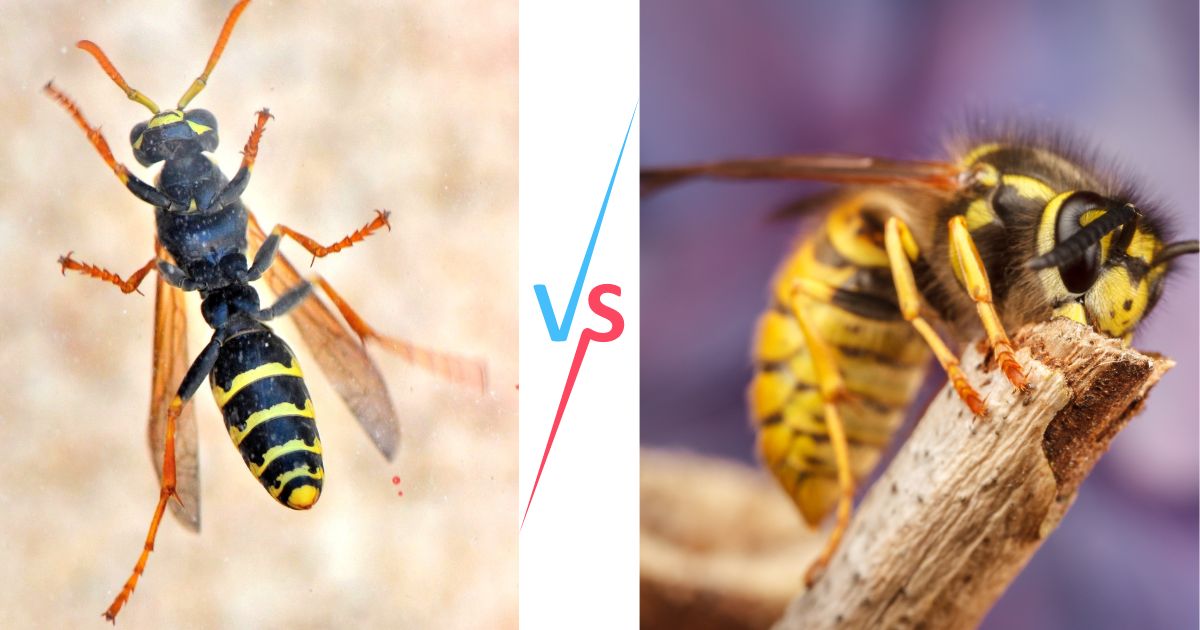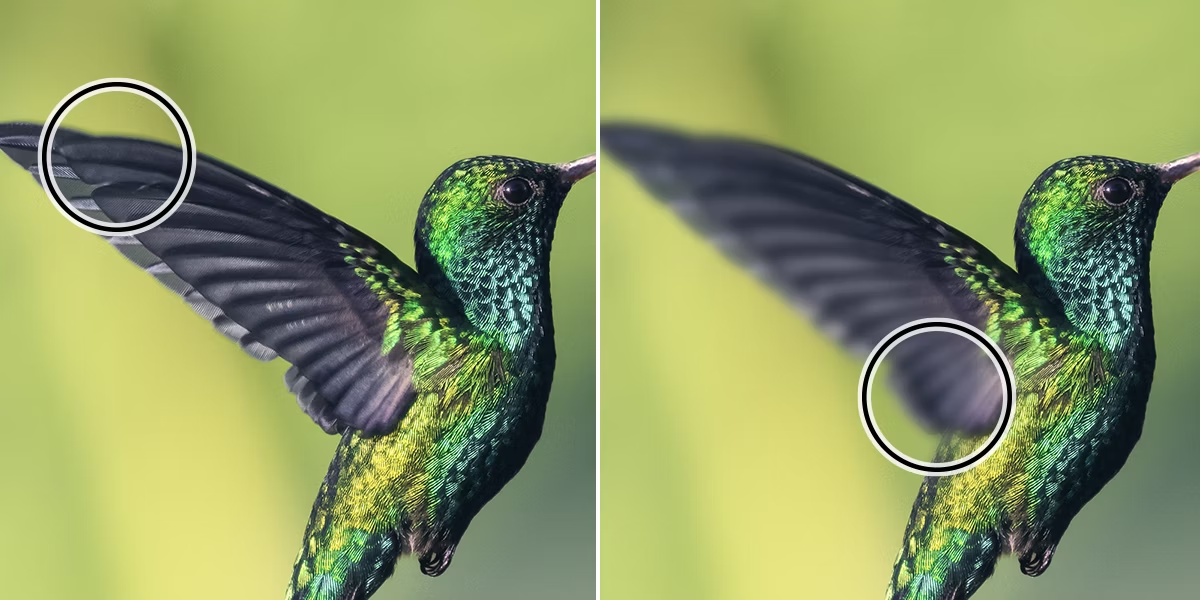Hornets and yellow jackets are both members of the wasp family, Vespidae, and are often mistaken for one another due to their similar appearances and behaviors. However, when it comes to Hornets vs Yellow Jackets, these two insects have distinct differences that are important to understand, especially if you encounter them in your garden or home. Hornets are generally larger and are known for their potent stings and aggressive nature, while yellow jackets are smaller but can be equally aggressive, especially when their nests are disturbed.
In the debate of Hornets vs Yellow Jackets, hornets belong to the genus Vespa and are characterized by their larger size, ranging from 1 to 1.5 inches in length. They are social insects that live in colonies and are known for building large, paper-like nests in trees, shrubs, and even buildings. Yellow jackets, on the other hand, belong to the genera Vespula or Dolichovespula and are typically about 0.5 to 0.75 inches long. These wasps are also social and build nests, but their nests are often found underground or in protected cavities.
Why Compare Hornets vs Yellow Jackets?
Understanding the differences between hornets and yellow jackets is crucial for several reasons. Firstly, identifying these insects accurately can help you assess the potential risk they pose. Both insects can be aggressive, but hornets are generally less likely to sting unless provoked, whereas yellow jackets are more territorial and likely to defend their nests aggressively. Secondly, knowing how to deal with these pests can prevent unwanted encounters and potential stings, which can be painful and, for some individuals, dangerous due to allergic reactions.
Additionally, distinguishing between these two insects helps in managing them effectively in your environment. Proper identification can guide you in choosing the right pest control measures and ensuring that you handle these insects safely. By understanding their behaviors, habitats, and roles in the ecosystem, you can coexist with them while minimizing risks to yourself and your family.
Physical Characteristics
Hornets
Size and Color
Hornets are easily recognizable by their impressive size and striking coloration. These insects can range in size from 1 to 1.5 inches, making them significantly larger than most other wasp species. Their bodies are robust and segmented, with a clear distinction between the head, thorax, and abdomen. The color of hornets can vary, but they are typically marked with a combination of black and white or black and yellow bands. One of the most distinctive hornets is the European hornet (Vespa crabro), which features a reddish-brown head and thorax with a yellow and black striped abdomen.
The sheer size of hornets can be intimidating, especially when they are flying close by. However, their size also aids in distinguishing them from other wasps and bees. Their wings are large and transparent, often folded lengthwise when at rest. Hornets also have large, powerful mandibles used for capturing prey and defending their nests.
Distinctive Features
Apart from their size and color, hornets have several distinctive features that set them apart from yellow jackets and other wasps. One such feature is their large, rounded head with a noticeable gap between the eyes. This gap gives them a more “helmeted” appearance compared to other wasps. Hornets also have longer antennae and more robust bodies, which contribute to their imposing appearance.
Another distinctive characteristic of hornets is their nesting behavior. Unlike many wasps, hornets typically construct their nests in elevated locations, such as trees, shrubs, or under the eaves of buildings. These nests are made from chewed wood fibers mixed with saliva, creating a papery material. Hornet nests are often large and football-shaped, with a single entrance hole at the bottom.
Yellow Jackets
Size and Color
Yellow jackets are smaller than hornets, measuring about 0.5 to 0.75 inches in length. Despite their smaller size, yellow jackets are easily identified by their vibrant black and yellow striped bodies. These striking colors serve as a warning to predators of their ability to sting. Unlike hornets, yellow jackets have a more streamlined and slender appearance, with less pronounced segmentation between the thorax and abdomen.
The black and yellow pattern of yellow jackets is not only distinctive but also a classic example of aposematic coloration, which is used by many insects to deter predators. Their wings are clear and are often folded along their backs when at rest. The smaller size and unique coloration make yellow jackets easily distinguishable from hornets, even at a glance.
Distinctive Features
Yellow jackets have several features that distinguish them from hornets and other wasps. One of the most notable is their aggressive behavior, particularly when defending their nests. Yellow jackets are known for their territorial nature and are more likely to sting repeatedly if they feel threatened. This behavior is partly due to their colony structure, where workers are tasked with defending the nest at all costs.
In addition to their behavior, yellow jackets are known for their nesting habits. Unlike hornets, yellow jackets often build their nests underground or in hidden cavities such as wall voids or hollow logs. These nests can contain thousands of individuals and are constructed from a similar papery material as hornet nests. The entrance to a yellow jacket nest is usually a small hole, and the nests themselves can be difficult to locate due to their concealed nature.
Also Read: Unfinished Carpet in Bedroom
Behavior and Aggression
Hornet Behavior
Social Structure and Nesting Habits
Hornets are social insects that live in colonies consisting of a queen, workers, and drones. The queen is responsible for laying eggs, while the workers take care of the nest, forage for food, and protect the colony. Drones, or male hornets, are primarily involved in mating with the queen. The colony’s social structure is highly organized, with each member playing a specific role in maintaining the nest’s functionality and survival.
In the comparison of Hornets vs Yellow Jackets, it’s important to note that both types of wasps exhibit similar social structures, but with notable differences. Hornet nests are often found in elevated locations such as trees, shrubs, or building eaves. These nests are constructed from a papery material made by mixing chewed wood fibers with saliva. The nests are usually large, football-shaped structures with a single entrance hole at the bottom. Hornets are known to build their nests in areas that provide protection from the elements and predators, ensuring the colony’s safety and survival.
Aggression Levels
Hornets are generally less aggressive than yellow jackets but can become highly defensive if their nest is threatened. While they are less likely to sting unprovoked, hornets will aggressively defend their colony if they perceive a threat. Their sting is painful and can be dangerous, especially for individuals who are allergic to insect venom. Despite their intimidating size, hornets prefer to avoid confrontation and will only attack if necessary to protect their nest.
Hornets use their powerful mandibles and stingers to defend themselves and their colony. Their venom contains a mix of toxins that can cause pain, swelling, and in some cases, severe allergic reactions. It’s essential to exercise caution when near hornet nests, as disturbing them can provoke an aggressive response.
Yellow Jacket Behavior
Social Structure and Nesting Habits
Yellow jackets, like hornets, are social insects that live in colonies. These colonies consist of a queen, workers, and males. The queen’s primary role is to reproduce, while the workers are responsible for foraging, nest maintenance, and defense. Male yellow jackets, also known as drones, mate with the queen but do not participate in colony activities. The social structure of yellow jacket colonies is efficient and highly organized, with each member contributing to the colony’s overall success.
Yellow jacket nests are often located underground or in concealed areas such as wall voids, hollow logs, or abandoned rodent burrows. The nests are made from a papery material similar to hornet nests but are usually smaller and more compact. Yellow jackets can build large nests containing thousands of individuals, making them a formidable presence when disturbed.
Aggression Levels
Yellow jackets are known for their aggressive and territorial nature, especially when defending their nests. They are more likely to sting than hornets, and their stings can be particularly painful due to their ability to sting multiple times. This aggressive behavior is a defense mechanism designed to protect their colony from perceived threats. Yellow jackets are more likely to be encountered during late summer and fall when their colonies are at their peak population.
Yellow jackets’ aggressive behavior makes them a common nuisance at outdoor events, where they are attracted to food and sugary drinks. Their persistence and boldness in pursuing food sources can lead to unwanted encounters and potential stings. It’s important to exercise caution and avoid swatting at yellow jackets, as this can provoke an aggressive response.
Habitat and Nesting
Hornet Habitats
Preferred Environments
Hornets prefer environments that offer ample food sources and suitable nesting sites. They are commonly found in wooded areas, gardens, and suburban landscapes where trees and shrubs provide ideal nesting locations. Hornets are adaptable and can thrive in various climates, but they tend to avoid extreme temperatures and arid conditions. Their preferred habitats often have access to water sources, which are essential for nest construction and the colony’s survival.
Hornets are attracted to areas with abundant prey, such as other insects and spiders, which they capture to feed their larvae. They are also drawn to flowering plants that provide nectar, which serves as an energy source for the adult hornets. The presence of flowering plants and insects makes gardens and landscaped areas attractive habitats for hornets.
Common Nest Locations
Hornet nests are typically found in elevated locations, such as trees, shrubs, and building eaves. These nests are constructed from a papery material created by mixing chewed wood fibers with saliva. The nests are often large and football-shaped, with a single entrance hole at the bottom. Hornets choose nesting sites that provide protection from the elements and predators, ensuring the colony’s safety and longevity.
In some cases, hornets may build nests inside structures such as attics, sheds, or garages, where they can take advantage of sheltered environments. These nests can pose a risk to humans and pets, especially if they are located near frequently used areas. It’s important to monitor potential nesting sites and take appropriate measures to prevent hornet infestations.
Yellow Jacket Habitats
Preferred Environments
Yellow jackets are highly adaptable and can thrive in a wide range of environments. They are commonly found in suburban and urban areas, as well as forests, fields, and gardens. Yellow jackets prefer habitats that provide access to food, water, and nesting sites. They are often attracted to human activity, particularly outdoor events where food and sugary beverages are available.
Yellow jackets are more likely to build nests in areas that offer protection from the elements and predators. They are frequently found in abandoned rodent burrows, hollow logs, and wall voids. The availability of sheltered nesting sites and abundant food sources makes these environments ideal for yellow jacket colonies.
Common Nest Locations
Yellow jackets typically build their nests underground or in concealed cavities such as wall voids, hollow logs, or abandoned burrows. These nests are constructed from a papery material similar to hornet nests but are usually smaller and more compact. The nests can contain thousands of individuals, making them challenging to control once established.
Yellow jacket nests are often difficult to locate due to their concealed nature. The entrance to a yellow jacket nest is usually a small hole, and the nests themselves are well hidden from view. This hidden location makes it crucial to be aware of yellow jacket activity and take appropriate precautions to avoid accidental encounters.
Diet and Predation
Hornet Diet
Types of Prey
Hornets are carnivorous insects that feed on a variety of prey. They primarily hunt other insects, such as flies, bees, and caterpillars, which they capture and feed to their larvae. Adult hornets consume nectar and sap, which provide them with energy for foraging and nest maintenance. Hornets are skilled hunters and use their powerful mandibles to capture and subdue their prey.
Hornets play an essential role in controlling pest populations by preying on insects that can damage crops and gardens. Their diet also includes other wasps, making them effective predators of potential competitors. By consuming a wide range of insects, hornets contribute to maintaining the balance of the ecosystem and reducing the need for chemical pest control methods.
Role in the Ecosystem
Hornets play a crucial role in the ecosystem by controlling insect populations and serving as pollinators. Their predation on pest insects helps reduce crop damage and supports the health of gardens and natural habitats. By feeding on nectar and sap, hornets inadvertently transfer pollen between plants, contributing to the pollination process.
Despite their benefits, hornets can also pose challenges to humans, particularly when they build nests near residential areas. It’s important to balance their ecological role with the need to manage their presence in human environments. Understanding their behavior and ecological contributions can help guide efforts to coexist with hornets while minimizing risks to people and pets.
Yellow Jacket Diet
Types of Prey
Yellow jackets are opportunistic feeders with a varied diet that includes both insects and sugary foods. They are known to hunt a wide range of insects, including flies, caterpillars, and spiders, which they capture and feed to their developing larvae. Adult yellow jackets consume nectar, fruit, and other sugary substances, which provide them with energy for foraging and nest maintenance.
Yellow jackets are particularly attracted to sugary foods and beverages, making them common pests at outdoor gatherings and picnics. Their attraction to sweet substances can lead to conflicts with humans, as they are drawn to open containers, food spills, and trash. This behavior makes it essential to manage food waste and take precautions to prevent unwanted encounters with yellow jackets.
Role in the Ecosystem
Yellow jackets play an important role in the ecosystem by controlling pest populations and serving as pollinators. Their predation on insects helps reduce the abundance of pests that can damage crops and gardens. Additionally, yellow jackets contribute to pollination by feeding on nectar and transferring pollen between plants.
While yellow jackets offer ecological benefits, their aggressive behavior and attraction to human food sources can pose challenges. Managing their presence in human environments requires a balance between appreciating their ecological contributions and minimizing risks to people and pets. By understanding their behavior and ecological role, we can develop strategies to coexist with yellow jackets while reducing conflicts.
Human Interaction
Hornet Encounters
Potential Dangers
Hornet encounters can be dangerous, particularly for individuals who are allergic to insect stings. While hornets are generally less aggressive than yellow jackets, they will defend their nests if threatened. Their stings are painful and can cause swelling, redness, and itching. For individuals with allergies, hornet stings can trigger severe reactions, including difficulty breathing, hives, and anaphylaxis, which requires immediate medical attention.
The potential danger of hornet encounters underscores the importance of exercising caution around their nests. Disturbing a hornet nest can provoke an aggressive response, leading to multiple stings. It’s crucial to be aware of hornet activity in your area and take steps to avoid accidental encounters, especially when working in gardens or near nesting sites.
Prevention and Safety Tips
Preventing hornet encounters requires awareness and proactive measures to minimize the risk of stings. Here are some safety tips to keep in mind:
- Identify Nest Locations: Regularly inspect your property for hornet nests, particularly in trees, shrubs, and building eaves. If you discover a nest, avoid disturbing it and consider contacting a professional pest control service for safe removal.
- Exercise Caution Outdoors: When working or spending time outdoors, be mindful of hornet activity. Avoid making loud noises or sudden movements near potential nesting sites, as this can provoke an aggressive response.
- Wear Protective Clothing: If you need to work near hornet nesting areas, wear protective clothing such as long sleeves, pants, and gloves. This can help reduce the risk of stings if you accidentally disturb a nest.
- Avoid Attracting Hornets: Keep food and sugary drinks covered when dining outdoors to avoid attracting hornets. Dispose of food waste and trash promptly, and clean up spills to minimize the risk of encounters.
By following these safety tips, you can reduce the likelihood of hornet encounters and protect yourself and your family from potential stings.
Yellow Jacket Encounters
Potential Dangers
Yellow jacket encounters can be particularly dangerous due to their aggressive nature and ability to sting multiple times. These wasps are more likely to attack when they feel their nest is threatened or when they are attracted to food sources. Yellow jacket stings are painful and can cause redness, swelling, and itching. For individuals with allergies, yellow jacket stings can trigger severe reactions, including difficulty breathing, hives, and anaphylaxis, which requires immediate medical attention.
The aggressive behavior of yellow jackets makes them a common nuisance at outdoor events, where they are attracted to food and sugary beverages. Their persistence in pursuing food sources can lead to unwanted encounters and potential stings. It’s important to exercise caution and take preventive measures to avoid yellow jacket stings, especially when dining or working outdoors.
Prevention and Safety Tips
Preventing yellow jacket encounters requires vigilance and proactive measures to minimize the risk of stings. Here are some safety tips to consider:
- Identify Nest Locations: Regularly inspect your property for yellow jacket nests, particularly in ground cavities, wall voids, and abandoned burrows. If you discover a nest, avoid disturbing it and consider contacting a professional pest control service for safe removal.
- Manage Food and Waste: Keep food and sugary beverages covered when dining outdoors to avoid attracting yellow jackets. Dispose of food waste and trash promptly, and clean up spills to minimize the risk of encounters.
- Wear Protective Clothing: If you need to work near yellow jacket nesting areas, wear protective clothing such as long sleeves, pants, and gloves. This can help reduce the risk of stings if you accidentally disturb a nest.
- Exercise Caution Outdoors: Be mindful of yellow jacket activity when spending time outdoors, especially in late summer and fall when their populations peak. Avoid making loud noises or sudden movements near potential nesting sites, as this can provoke an aggressive response.
By following these safety tips, you can reduce the likelihood of yellow jacket encounters and protect yourself and your family from potential stings.
Myths and Misconceptions
Common Misunderstandings About Hornets
Hornets are often misunderstood and surrounded by myths that can lead to unnecessary fear and confusion. One common misconception is that all hornets are highly aggressive and likely to sting without provocation. In reality, hornets are generally less aggressive than yellow jackets and will only sting if they perceive a threat to their nest. Understanding their behavior can help reduce fear and promote safe coexistence.
Another myth about hornets is that they are the same as wasps and bees. While hornets are a type of wasp, they are distinct from other wasp species and bees in terms of size, behavior, and nesting habits. Hornets are larger and have unique nesting preferences, often building large, papery nests in elevated locations.
It’s also important to dispel the myth that hornets are always harmful. While their stings can be painful and potentially dangerous for allergic individuals, hornets play a beneficial role in the ecosystem by controlling pest populations and serving as pollinators. By understanding their ecological contributions, we can appreciate their presence while taking steps to minimize risks.
Common Misunderstandings About Yellow Jackets
Yellow jackets are also surrounded by myths and misconceptions that can lead to fear and confusion. One common myth is that yellow jackets are aggressive for no reason. While they are more aggressive than hornets, their behavior is primarily defensive and driven by the need to protect their nests. Yellow jackets are more likely to sting when they feel threatened or when they are attracted to food sources.
Another misconception is that yellow jackets are beneficial in all situations. While they do play a role in controlling pest populations and pollination, their aggressive behavior and attraction to human food sources can pose challenges in residential areas. Understanding their behavior and taking preventive measures can help minimize conflicts.
It’s also important to dispel the myth that yellow jackets can only sting once. Unlike bees, which have barbed stingers that detach after a single sting, yellow jackets can sting multiple times without losing their stingers. This ability makes them more formidable and requires careful handling to avoid stings.
Pest Control and Management
Identifying Nests
Identifying hornet and yellow jacket nests is crucial for effective pest control and management. Hornet nests are typically large, football-shaped structures made from a papery material. They are often found in elevated locations such as trees, shrubs, and building eaves. Yellow jacket nests, on the other hand, are usually located underground or in concealed cavities such as wall voids, hollow logs, or abandoned burrows.
To identify nests, look for signs of insect activity, such as wasps entering and exiting a specific location. Hornet nests are often more visible due to their size and elevated position, while yellow jacket nests can be more challenging to locate due to their hidden nature. If you suspect the presence of a nest, observe from a safe distance and avoid disturbing the area.
Safe Removal Techniques
Removing hornet and yellow jacket nests requires caution and proper techniques to ensure safety. Here are some safe removal techniques to consider:
- Assess the Situation: Before attempting to remove a nest, assess the situation and determine if professional assistance is needed. If the nest is large or located in a difficult-to-reach area, it’s best to contact a pest control professional for safe removal.
- Use Protective Gear: If you choose to remove a nest yourself, wear protective clothing such as long sleeves, pants, gloves, and a face mask. This gear can help protect you from stings if the insects become aggressive.
- Apply Insecticide: Use a wasp and hornet insecticide spray designed for nest removal. Apply the spray at night when the insects are less active and the majority of the colony is inside the nest. Follow the manufacturer’s instructions carefully.
- Seal Entry Points: After removing the nest, seal any entry points to prevent future infestations. Repair damaged screens, seal cracks and crevices, and ensure that trash and food waste are properly stored to reduce attraction to the area.
When to Call a Professional
In some cases, calling a professional pest control service is the safest and most effective option for removing hornet and yellow jacket nests. Here are some situations where professional assistance may be necessary:
- Large Nests: If the nest is large or contains a significant number of insects, a professional can safely handle the removal process.
- Difficult Access: Nests located in hard-to-reach areas, such as wall voids or high eaves, may require specialized equipment and expertise for safe removal.
- Allergic Reactions: If you or a family member is allergic to insect stings, it’s best to avoid attempting nest removal yourself and rely on a professional for safe handling.
By understanding the appropriate methods for nest identification and removal, you can effectively manage hornet and yellow jacket populations and minimize risks to your home and family.
Conclusion
Hornets and yellow jackets, while similar in appearance, have distinct differences that are important to understand. In the comparison of Hornets vs Yellow Jackets, hornets are larger and generally less aggressive, preferring to build nests in elevated locations. Yellow jackets, on the other hand, are smaller but more aggressive, often nesting underground or in concealed cavities. Both insects play important roles in the ecosystem, controlling pest populations and contributing to pollination.
Understanding the key differences between Hornets vs Yellow Jackets can help you assess potential risks and take appropriate measures to prevent unwanted encounters. By recognizing their behaviors, habitats, and ecological contributions, you can coexist with these insects while minimizing risks to yourself and your family.
Hornets and yellow jackets are fascinating insects with unique behaviors and ecological roles. While they can pose challenges in residential areas, understanding their differences and taking preventive measures can help you manage their presence safely and effectively. By appreciating their contributions to the ecosystem and taking steps to minimize risks, you can coexist with these insects while enjoying the benefits they provide.
Frequently Asked Questions (FAQs)
Are Hornets More Dangerous Than Yellow Jackets?
Hornets are generally less aggressive than yellow jackets and are less likely to sting unless provoked. However, their stings can be painful and potentially dangerous, especially for individuals who are allergic to insect venom. Yellow jackets are more aggressive and territorial, making them more likely to sting when their nests are threatened.
How Can You Tell a Hornet from a Yellow Jacket?
Hornets are larger than yellow jackets, with a more robust body and distinct coloration. Hornets often have black and white or black and yellow bands, while yellow jackets are characterized by their vibrant black and yellow stripes. Additionally, hornets typically build nests in elevated locations, while yellow jackets prefer underground or concealed nesting sites.
What Should You Do If You Find a Nest?
If you find a hornet or yellow jacket nest, it’s important to exercise caution and avoid disturbing the area. Observe from a safe distance and consider contacting a professional pest control service for safe removal. If you choose to remove the nest yourself, use protective gear and follow proper removal techniques to minimize risks.
By understanding the differences between hornets and yellow jackets and taking appropriate safety measures, you can effectively manage these insects and reduce the likelihood of unwanted encounters.










